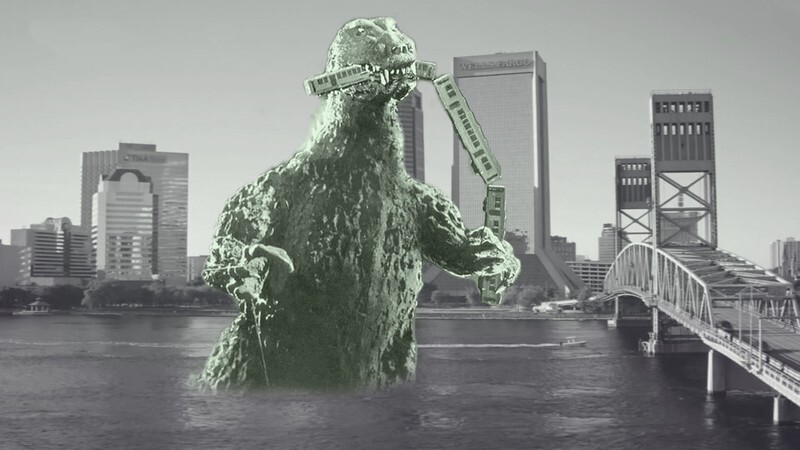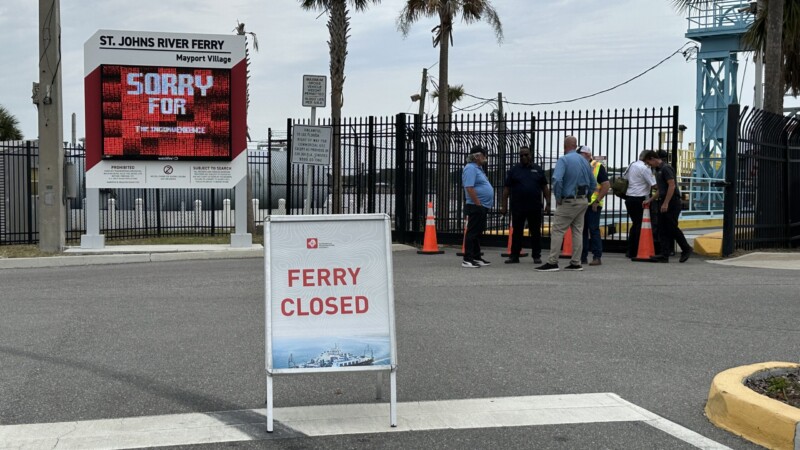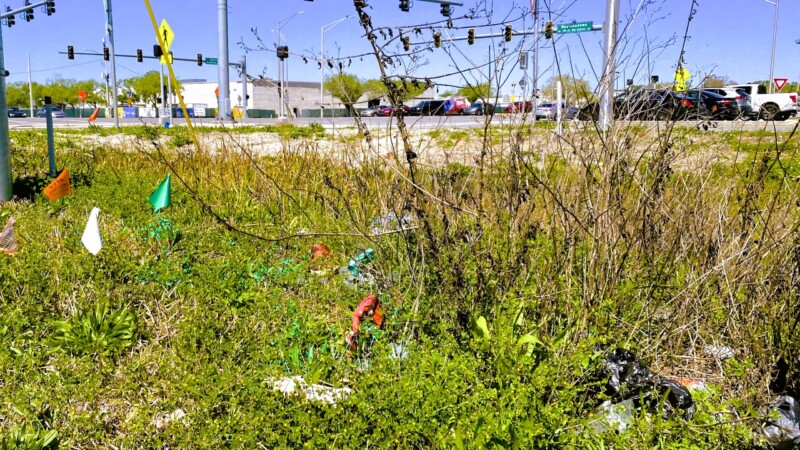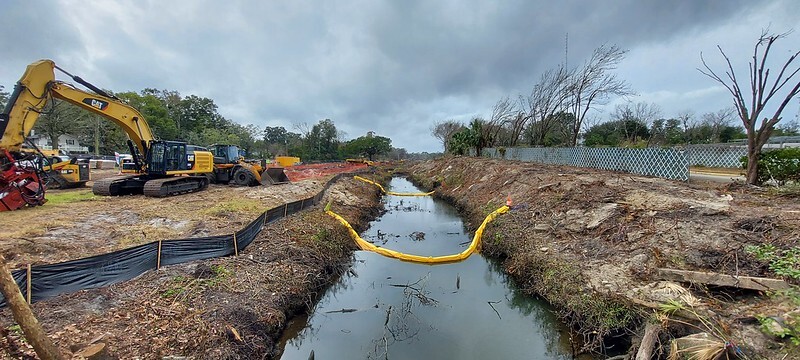
Downtown Jacksonville has long embraced what can best be described as the Godzilla strategy of urban development: Demolishing existing buildings in hopes that flashy new ones will replace them. There’s just one problem with this strategy: It doesn’t work. It’s time to change gears before Downtown becomes nothing but empty lots and monster footprints.
Godzilla vs. River City Brewing Co.
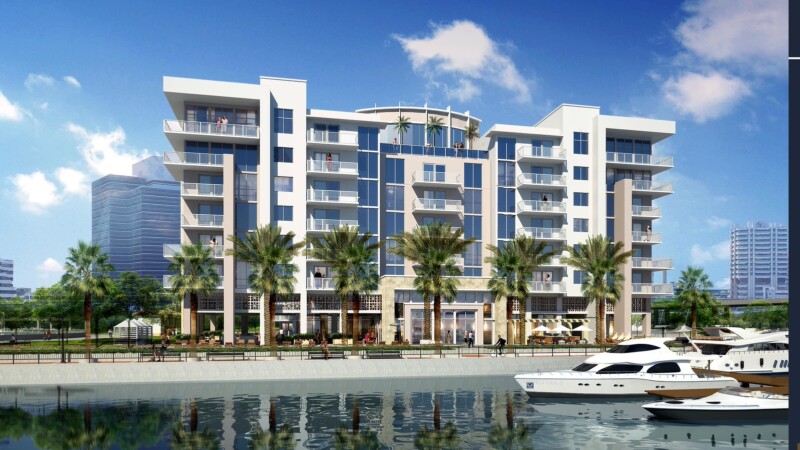
The most recent example of a demolition of an existing business resulting in yet another empty field came on Jan. 11th when the Downtown Investment Authority canceled an agreement with Related Group to redevelop the former River City Brewing Co. site as a mixed-use development. Related Group had put the site under contract in October 2020 in order to replace it with a $93 million, 328-unit apartment development that hinged on some generous city incentives, including the transfer of city-owned waterfront land free of charge and about $20 million in incentives.
The plan drew criticism from the start, as it would remove the River City Brewing Co., one the few remaining restaurants anywhere on the Downtown Jacksonville waterfront. Following public input, including by us at The Jaxson, Related Group agreed to incorporate a restaurant into its plans. This simple move would turn a loss into a net gain, but some locals remained skeptical about losing the River City Brewing Co. for a major development that was still years away.
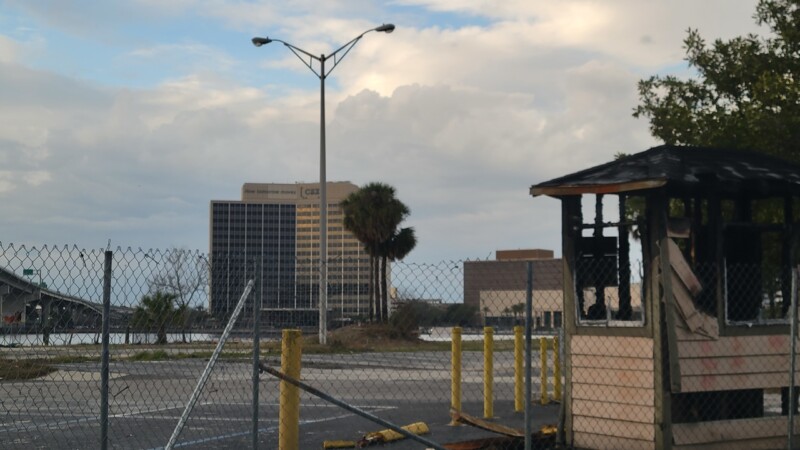
As it turns out, the skeptics were right to worry. Citing rising construction costs, Related Group missed its contract deadlines and the DIA pulled the plug. While DIA CEO Lori Boyer has expressed optimism that Related will present a new proposal for the site, it still means a delay of at least several months before any construction begins. In the meantime, a site home to waterfront eateries since the 1940s will remain empty. It has even drawn its own nickname: Lori’s Lawn, the Southbank counterpart to the former Jacksonville Landing site’s Lenny’s Lawn.
A legacy of dynamite

In isolation, the delay at the River City Brewing site wouldn’t merit notice, but it’s just the latest example of an ongoing problem. The city of Jacksonville has long been one of the foremost practitioners of what we at The Jaxson call the Godzilla strategy of urban development. The conceit here is that old buildings are fundamentally inadequate for modern needs, so we’re better off leveling them. The thinking continues that the cleared lot will blossom into a fertile garden from which the miracles of modern architecture will rise like the mighty phoenix. Under the Godzilla strategy, it’s more important to get rid of those gross old buildings than to actually have a plan to replace them; creating vast swaths of parking craters and dead space is a small price to pay for progress.
This isn’t new thinking, of course. The idea of eradicating “slums” and “blight” to make way for a more prosperous future (or at least to move them out of view of the people calling the shots) dates at least to the 19th century. It became a common piece of conventional wisdom in the city planning field thanks to the early urban renewal programs of the 1930s and 40s, and armed with tools like eminent domain and code enforcement, many North American cities demolished huge parts of themselves in the quest to rise again.
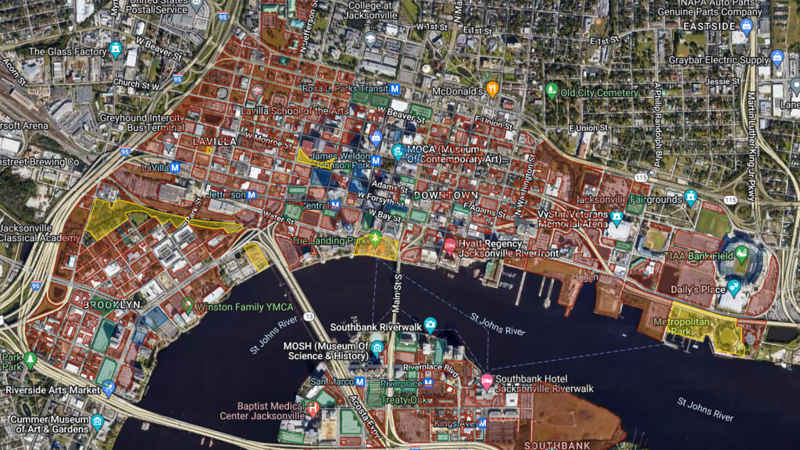
Critiques of Godzilla-style urban renewal date back to Jane Jacobs in the early 1960s and the practice became controversial. The fact that cities didn’t seem to be revitalizing any faster despite billions of dollars spent and hundreds of thousands of people displaced convinced many, particularly those in the path of the wrecking ball, that urban renewal simply doesn’t work as advertised. Over time, city leaders too began concluding that turning dozens of blocks into effectively permanent dead zones wasn’t the best way to make their Downtowns more inviting. In Downtown Jacksonville today, there are far more parking craters than actively used buildings.
By the end of the 1980s, cities had begun moving on from the Godzilla strategy in favor of other methods of revitalization. Jacksonville, however, has carried on the giant monster tradition. In the early 1990s, despite the wishes of residents, the city of Jacksonville acquired and razed much of the historic African-American neighborhood of LaVilla. More than 30 years later, the neighborhood remains a moonscape, and only now are we starting to see signs of new investment and revival that had been promised for LaVilla.
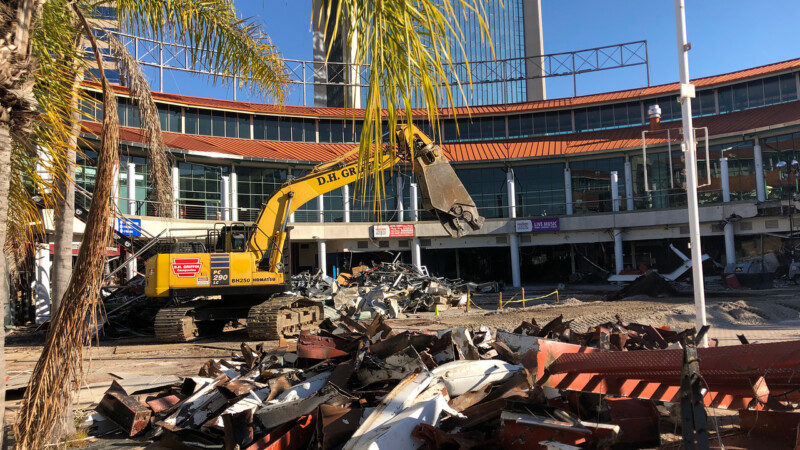
On a smaller scale, Jacksonville continues employing the Godzilla strategy even today. In 2019, the city announced its controversial plan to buy and raze the Jacksonville Landing, with no firm plan for replacement. The Jaxson predicted at the time that if the Landing were demolished, the site would remain vacant for years. Four years later, that prediction has proven true. The same year, the city demolished the old City Hall Annex and old courthouse, again without clear plans for their future. Four years later, we’re still waiting.
Where we go from here
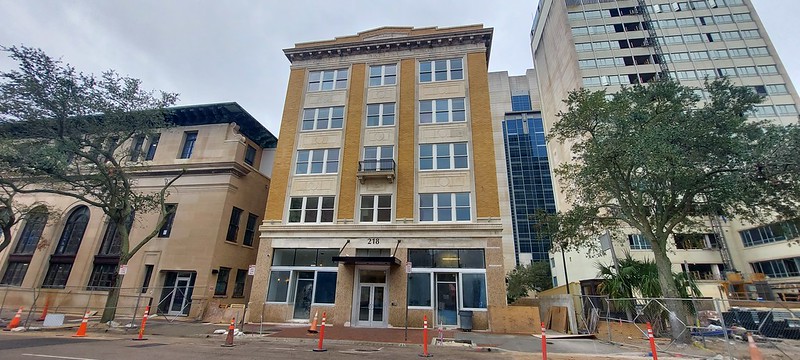
There are some notable differences between situations where the city demolished property it owned or acquired and what’s happening at the River City Brewing site. Related Group is a private owner, and the lack of forward momentum has more to do with shifting economic winds than a lack of vision. But the city was heavily involved in making the project feasible in the first place. The city offered extremely generous incentives and secured the contract for the site. And now, Jaxsons get another empty lot on the waterfront for months, possibly years.
There are a number of solutions to avoid these messes in the future. The city can refuse to approve demolitions (or demolishing things themselves) without an imminent replacement plan. It can act with more urgency in moving projects forward so they don’t die on the vine. And above all, we can reject the Godzilla strategy once and for all.
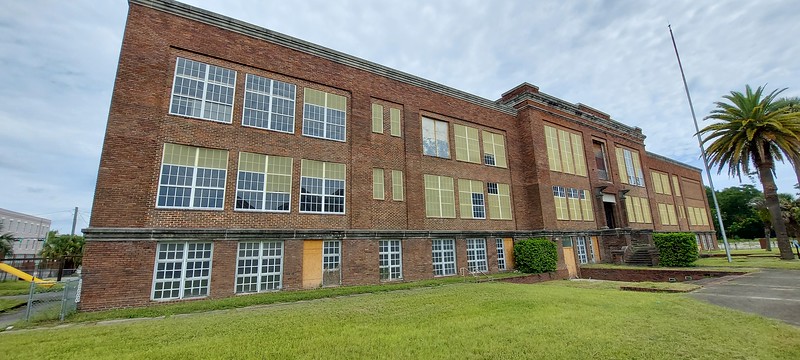
It’s not as if the strategy has ever worked for Downtown Jacksonville any better than it has anywhere else. As we’ve written many times, unlike Godzilla’s Tokyo, which always gets totally rebuilt from scratch in time for the next movie, buildings that get the giant-monster treatment in Downtown Jacksonville tend to stay that way for years if not decades. Meanwhile, the buildings that have survived the atomic fire attacks are being renovated at a tremendous pace into a wide variety of new uses. Largely driven by adaptive reuse and a smart-incentives rewrite by the DIA, the Downtown Northbank is seeing a veritable renaissance of new projects. Obsolete office buildings are being turned into residential units and ground-floor retail left and right.
It’s time we embrace what’s working. Godzilla is great when you’ve got to fend off King Ghidorah or Rodan, but history shows again and again that he shouldn’t be a model for urban planning.



